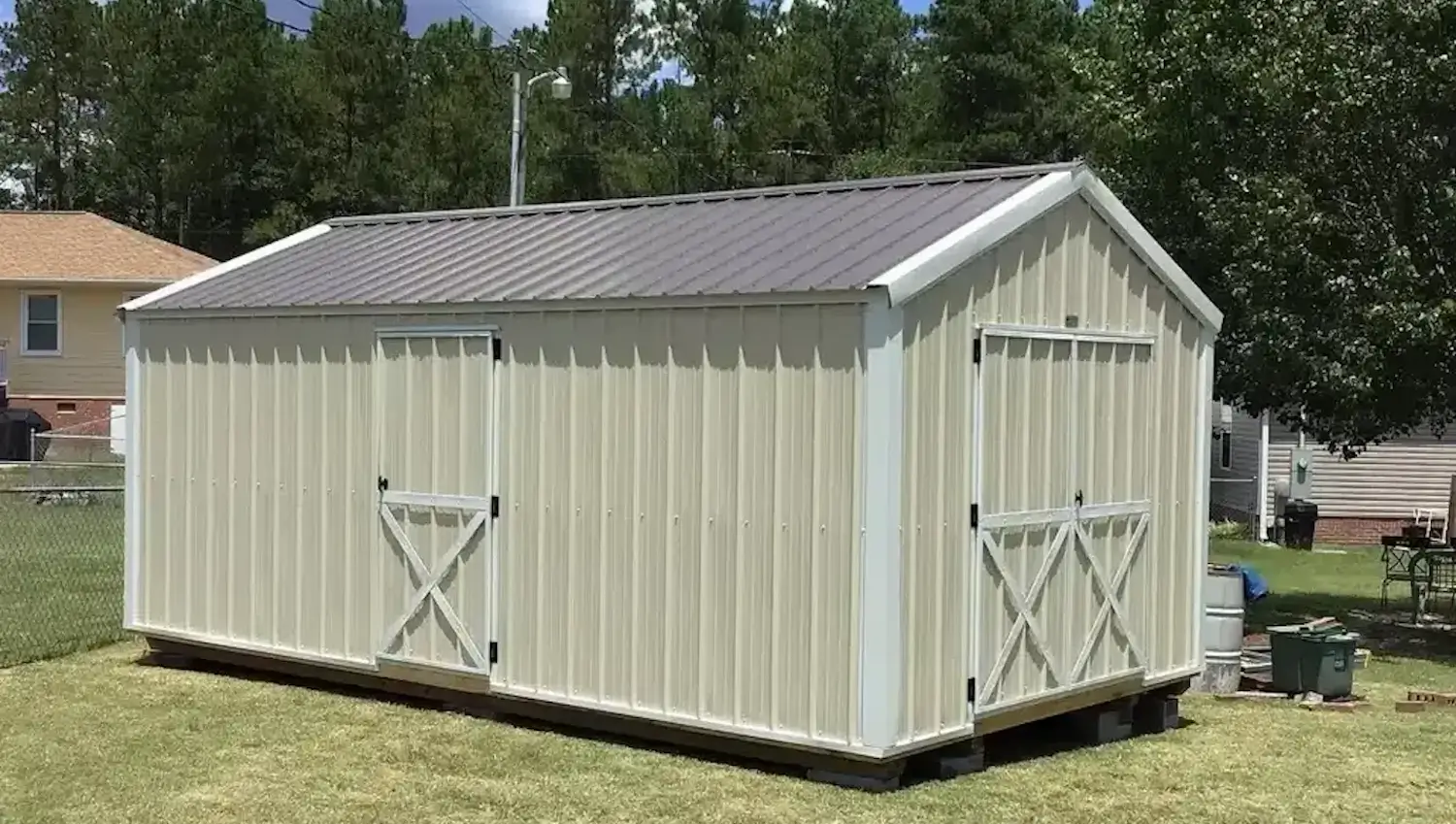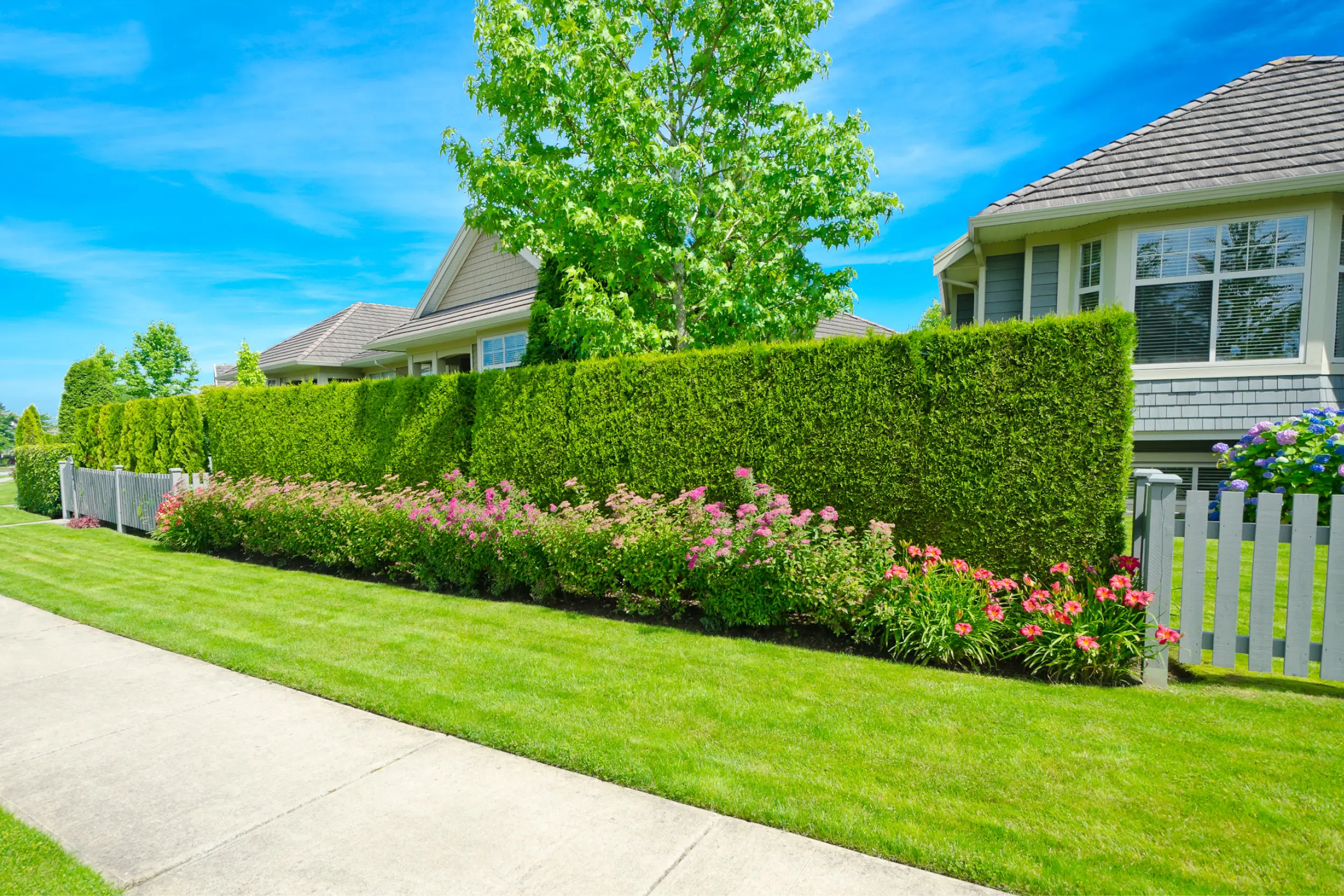
August 24, 2025

Most people desire a backyard that feels private and serene. With houses close by and neighbors closer, it can be difficult to get some quiet time outdoors without feeling watched. Ordinary fences can solve this problem, but they usually appear harsh or plain. They don’t always blend effectively into the natural beauty of a garden.
Privacy bushes provide a more permanent answer. These shrubs form a “living fence” that supplies greenery and softens a yard and yet blocks unwelcome views. They also provide other advantages including cleaner air, less noise and a safe habitat for birds and pollinators. Instead of a featureless wall, homeowners enjoy privacy that feels animated, new and inviting.
Living privacy screens do so much more than simply block a neighbor’s view. They turn a backyard into a tranquil, green refuge that is welcoming and alive. Unlike wood or metal fencing which can look stark, unforgiving and intimidating, shrubs and hedges offer a natural growth process that softens the landscape, providing privacy and beauty.
Not all privacy hedges are created equal. To get the best results, homeowners should consider several factors before planting.
Rapidly growing shrubs should be considered by homeowners who prefer their privacy. Green Giant arborvitae can reach 2 to 4 feet annually and forms a lush barrier of vegetation in several seasons. Privets and some laurels are also other rapid growers. But with increased growth there is usually more pruning to do and therefore moderation is the key.
The leaves of the evergreen shrubs remain throughout the year, hence year-long privacy. Instead, the deciduous shrubs lose leaves in winter but frequently produce colorful flowers or bright leaves in spring and early autumn. Homeowners need to determine whether year-round screening or seasonal beauty is a higher priority.
All plants will need some tending, but the level of care varies:
For busy homeowners or those who prefer a hands-off approach, selecting shrubs that naturally grow into tidy shapes is the best option.
Not every shrub belongs in every yard. Before planting, think about:
By selecting shrubs that match local conditions, homeowners have less frustration and healthier plants.
Shrubs need not be mere green walls. Many provide beauty and variety all year round:
Selecting shrubs with more than one favorable quality means that the privacy screen looks desirable at all times, not just in summer.
When selecting plants to make a natural fence alternatives, some bushes are excellent for swiftness of growth, ease of care and amount of coverage. Following is a selection of the best ones, organized by category to make it a little easier for homeowners to find the right fit for their yard.
Evergreens are the backbones of shrubs for privacy landscaping. As they keep their leaves throughout the entire year, they continuously provide cover even throughout the coldest days of winter. Many of them are fast growers as well and require only straightforward care.
1. Thuja ‘Green Giant’ Arborvitae
The Green Giant arborvitae is known for being fast and dependable. It will easily grow 2–4 feet a year and become a green wall within a few years. Because of its natural pyramid form, it requires little pruning, and it has natural resistance to deer and disease.
2. American Arborvitae
This type is a bit slower to mature but extremely cold hardy. It is a versatile plant growing well in a wide range of soils and when pruned, forms a tight, formal hedge.
3. Wax-Leaf Privet
With bright and shiny evergreen foliage and fast growth, the wax-leaf privet works well in tighter spaces. It can grow 2 to 3 feet a year and creates a dense barrier that obscures sightlines.
4. English or Cherry Laurel
SLaurels are strong, glossy-leaved evergreens that can handle drought once established. They can grow as much as 3 feet a year, creating a thick green hedge with little fuss.
5. Schip (Skip) Laurel
Skip laurel has a wide vase-shaped growth habit and is shade-adapted, which means it does quite well in less-sunny spots. It’s rugged and grows quickly without needing much care.
6. Portuguese Laurel
This laurel is evergreen with dark leaves, red stems, and small white flowers in summer. The hedge is thick and resistant to deer, turning purple in the fall, losing its leaves in the process.
7. Hollies
Hollies combine function with beauty. Their evergreen leaves are densely held through the year, while shiny red berries in winter bring seasonal color and feed birds.
Deciduous shrubs, in contrast to evergreens, drop their leaves in winter, but they provide flowers, berries and colorful foliage during the growing season. Many gardeners blend them with evergreens to achieve this mix of year-round coverage and seasonal flourish.
1. Weigela
This shrub is recognized for its arching, pink, white, or red flowered branches that drape over in spring. It grows fast and brings the bees and the other pollinators to the yard, and is also minimal-fuss.
2. Beautyberry
Getting its name from its vibrant purple berries, which emerge in autumn and last through winter, beautyberry lives up to its name. Birds love the fruit, and homeowners appreciate the flash of color.
3. Boxwood
It might grow more slowly, but boxwood is still one of the hardiest of horticultural survivors. Its dark green leaves mean it also offers year-round structure; it can be neatly clipped into formal hedges or left wild.
In areas with dry summers or limited water, drought-resistant shrubs are the way to go. There are also those species that double as wildlife havens, drawing birds and other pollinators while still shielding homeowners.
1. Drought-Tolerant Options
2. Wildlife-Attracting Shrubs
Selecting the best shrubs is only part of the task; how they are installed and maintained will determine how well they serve as a living privacy screen. Here are some tips for getting the most out of the job:
For a hedge to serve as a real barrier, the shrubs should be planted close enough together that the branches will intermingle as they grow. If they are too far apart, gaps will appear and the screen will be thin and uneven. As a rule, check the expected mature width and space them half that distance apart. This ensures they’ll weave into a solid wall of green within a few years.
Planting just one kind of shrub looks uniform but increases vulnerability to pests and disease. By mixing species, homeowners create a more resilient hedge. Combining evergreens with flowering or berry-producing shrubs adds beauty while reducing risk of widespread damage if one type becomes diseased.
Most evergreen privacy hedge plants only need one pruning per year, best done in late winter or early spring. Deciduous shrubs may need light trimming after flowering to maintain shape. Regular pruning promotes fuller, denser growth, enhancing the hedge’s ability to block views and noise.
Even lower-maintenance shrubs benefit from a little care in order to look their best.
Having privacy in the backyard is something many homeowners want. With the right shrub, whether fast-growing arborvitae, colorful beautyberry or hardy boxwood, any yard can be transformed into a private and peaceful retreat. These plants don’t just block sightlines; they also reduce sound, feed wildlife and exhibit beauty through flowers, berries and altered color. People can be served by Growcycle, providing guides, tips and tools to make planting easier and more productive.
Disclaimer: This material is for informational purposes only and should not be relied on for legal, medical, financial, or any other form of professional advice.
Among the easiest are boxwood and holly; both require little pruning and care.
Skip laurel is a perfectly good selection — fast-growing, shade-tolerant, low-maintenance.
Thuja ‘Green Giant’ arborvitae provides quick, year-round privacy and grows very tall.
Laurel, arborvitae, holly and privet are some bearers of green that can go a long way toward natural backyard screens.